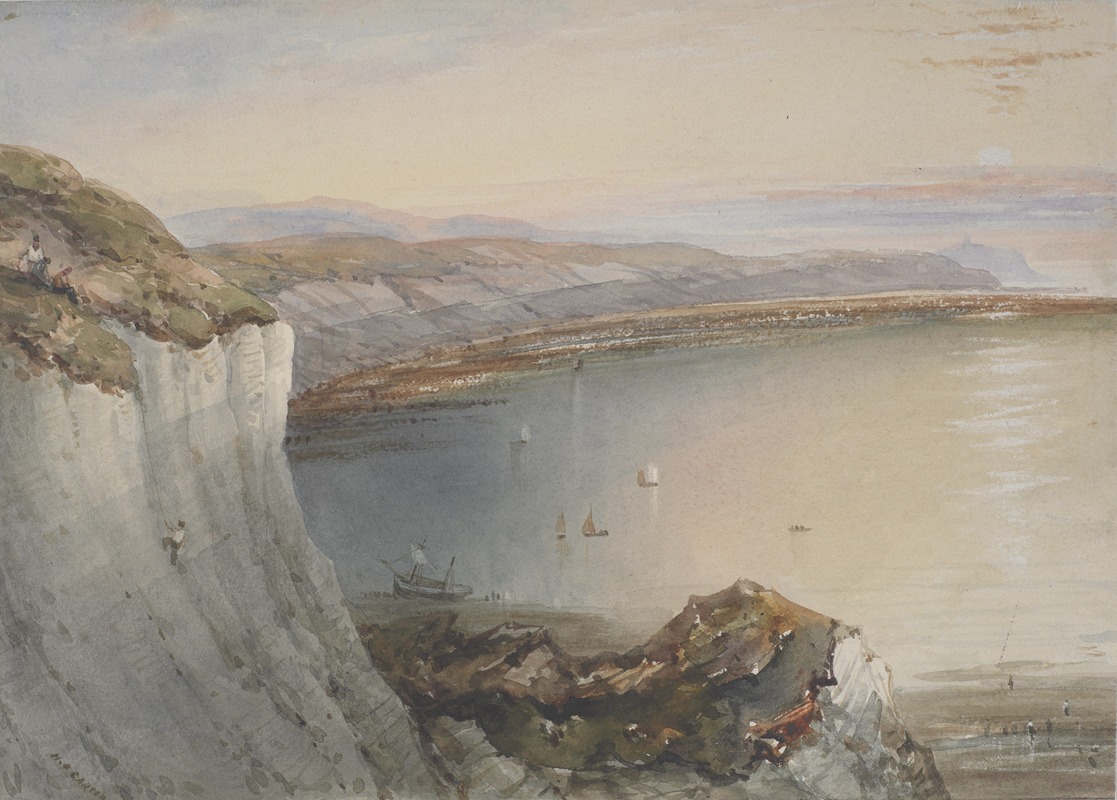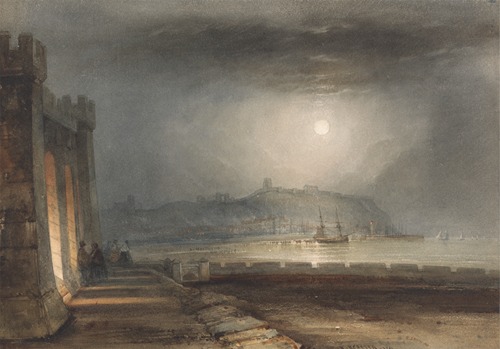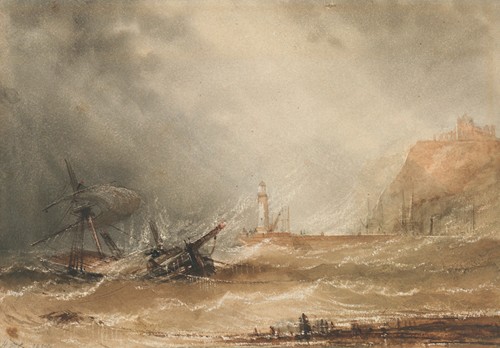
Henry Barlow Carter was born in Bermondsey South London in 1803 but was living in Plymouth when he first started exhibiting. He then moved to Hull in East Yorkshire and by 1830 was living in Scarborough, where he married his cousin Eliza and started a family. He was then established as a drawing master but started a close collaboration with a bookseller in Scarborough and illustrated The Guide to Scarborough, as well as twenty views of Scarborough, which were offered to tourists in print form.
He taught his two sons to paint, one of whom, Joseph Newington Carter, went on to become an artist and the other, Henry Vandyke Carter studied medicine, but illustrated the famous Gray’s Anatomy.
In 1862, five years after the death of his wife, he moved to Torquay, where he died of bronchitis in 1867.
He painted principally in watercolours, although there are a few oils, and primarily scenes of Yorkshire, with his large atmospheric seascapes inspired by J.M.W. Turner. He was also influenced by Peter de Wint, whose work he collected.
He exhibited at The Royal Academy from 1827-1830 and also at the British Institution and Suffolk Street.


